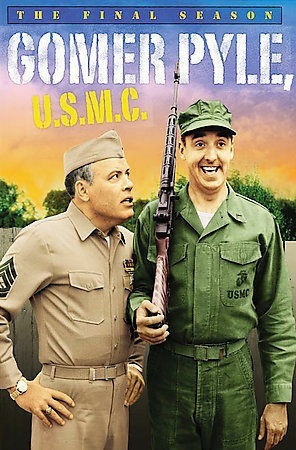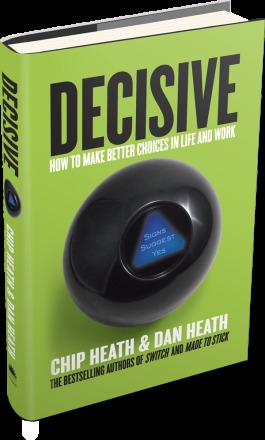How Do You Make Good Decisions?
NOTE: Do you remember when there were only three TV networks and a couple of UHF channels? Well, this post will take you back a bit when everyone watched The Andy Griffith Show and life was simple. Enjoy!
Previous installments of my weekly blog from 2013 can be found on my website at https://stevemarshallassociates.com/steves-blog/

In one episode, Sergeant Carter enters a room where Gomer is slapping the edge of a table with the ends of his first two fingers, forefinger and middle, and then looking at them. Characteristic of Carter, he yells at Gomer, “Pyle, what are you doing?” Gomer responds simply, “I am making a decision, Sergeant Carter. My forefinger is yes and my middle finger is no; whichever hurts the most after I slap them on the table is the answer to my decision.”
Sounds funny, huh? Well, I have observed some of the odd ways we make decisions as people in this world and Gomer was not that unusual. Take, for example, the process my friend, Chris Hutchinson, calls, “What you don’t see won’t hurt you – right?”
He describes drivers in New England who are also faced with difficult decisions – minimal signage, too many vehicles, and rotaries (roundabouts or traffic circles). The right-of-way - when entering a rotary - circling vehicles have the right of way. Some drivers have developed a technique to accomplish this difficult task. They simply allow their vehicle to slowly drift forward into the circling traffic
while looking in the opposite direction at their chosen exit from the rotary.
Eventually, some poor soul comes to a screeching halt since a vehicle is blocking his or her forward progress. The entering vehicle then accelerates quickly toward their preferred exit. The key to success in this maneuver is not to make eye contact with any driver – they simply look where they are going and avoid seeing the pending disaster so it doesn’t occur. At least that’s the hope!
Fortunately, for you and me, there are several good alternatives. One of my most

“When it comes to making decisions, it’s clear that our brains are flawed instruments.”
First, we have to understand the problem. The authors point out the “four villains” when it comes to making decisions:
- We have too narrow of a focus. We are guilty of “spotlight thinking.” We focus on the obvious and visible. We miss important facts outside our immediate view.
- We fall into confirmation bias. We develop a quick belief about something and then seek out information that confirms that belief.
- We get caught in short-term emotion. We are too emotionally connected to the decision and struggle with being appropriately detached.
- We are guilty of overconfidence. We assume that we know more than we actually do know and jump to conclusions, thinking we can accurately predict the future.
What I really like about this book is that it lays out a decision-making process that can be used in any situation. It is designed to counteract the influence of the four villains and consists of four steps:
- Widen your options.
- Reality-test your assumptions.
- Attain distance before deciding.
- Prepare to be wrong.
The WRAP
The process is sequential – you do the options in descending order – and the more you employ this process, the better you get at it. With enough practice, it becomes second nature.
So, your choice – Gomer Pyle decision-making or a process that really works?
Articles from Steven Marshall
View blog
Note: Please pardon my absence for the past two weeks - recovering from a hip replacement, and I dec ...

NOTE: I found this excellent article in the 'National Review' by Rich Lowry. It certainly resonates ...

NOTE: Thank you for the excellent feedback on last week's post about "Whatever Happened to Complicat ...
You may be interested in these jobs
-

RN Registered Nurse
Found in: One Red Cent US C2 - 2 days ago
Ascension Health Nashville, United StatesDetails · Sign-on bonus: $ · Department: Acute Care/Vascular Unit · Schedule: Full Time, Nights Hour Shifts · Hospital: Ascension Saint Thomas West · Location: Nashville, TN · Benefits · Paid time off (PTO) · Various health insurance options & wellness plans · Retirement benefit ...
-

Travel Nurse
Found in: Talent US A C2 - 2 days ago
Standard Healthcare Oakdale, United StatesStandard Healthcare is seeking an experienced Emergency Room Registered Nurse for an exciting Travel Nursing job in Oakdale, CA. Shift: 3x12 hr nights Start Date: ASAP Duration: 13 weeks Pay: $2445 / Week Emergency Room · We are seeking a Registered Nurse to join our team for a ...
-
Adjunct Instructor
Found in: Talent US C2 - 6 days ago
Pellissippi State Technical Community College Knoxville, United StatesTitle: Adjunct Instructor - Criminal JusticeRequired Documents Needed to Upload at Time of Application: · • Resume · • Unofficial TranscriptsPosition Summary: To provide quality instruction for student learning and to maintain a positive learning environment in the classroom. The ...

Comments